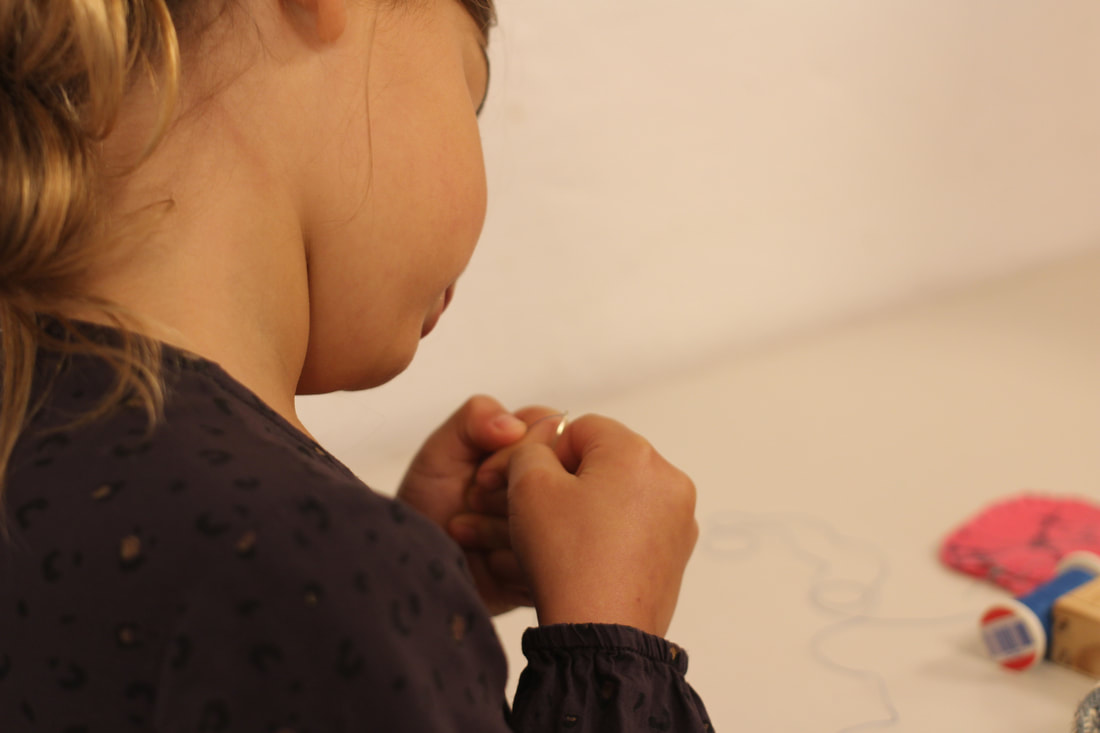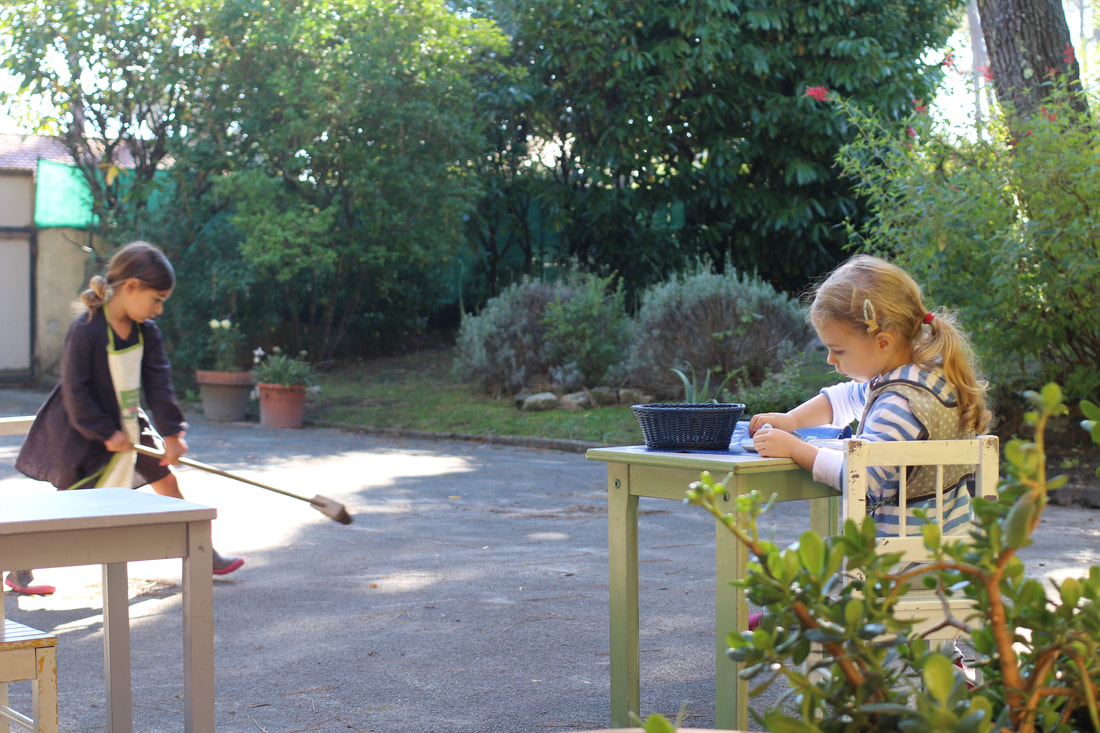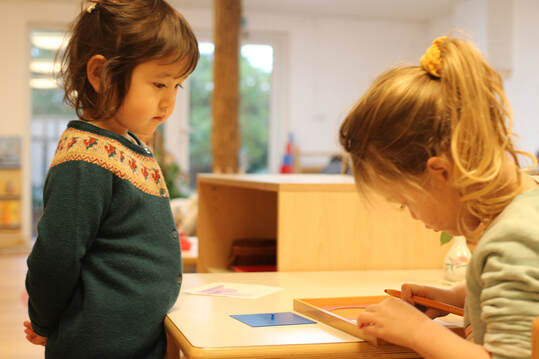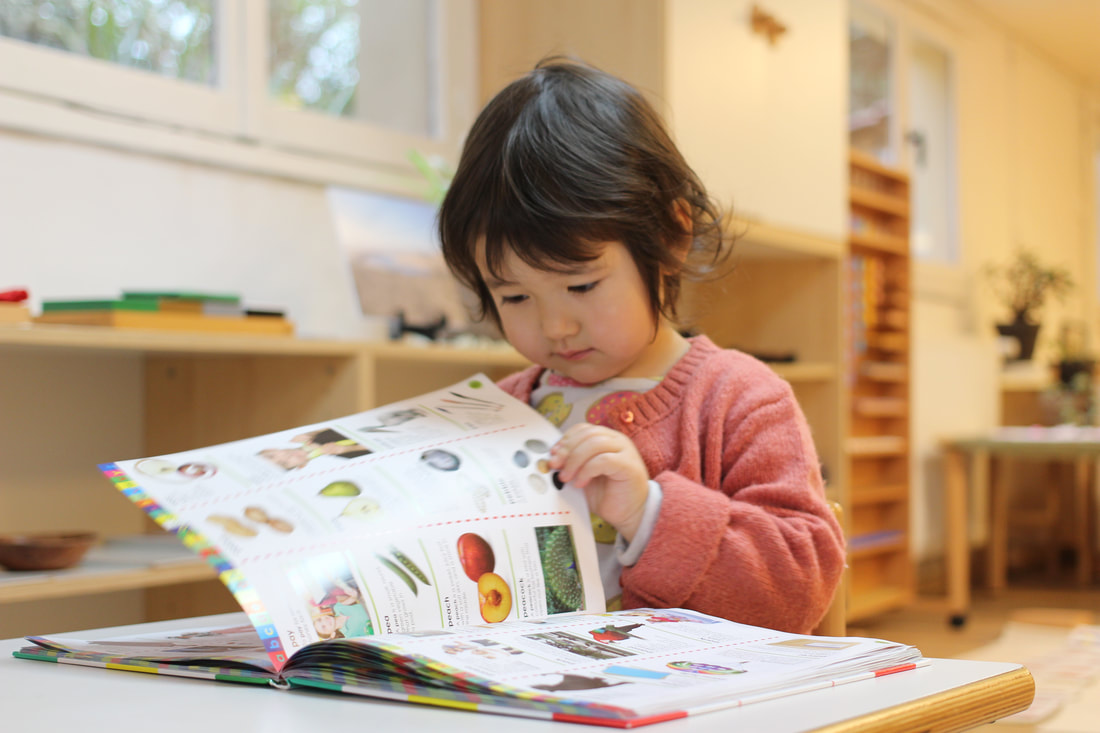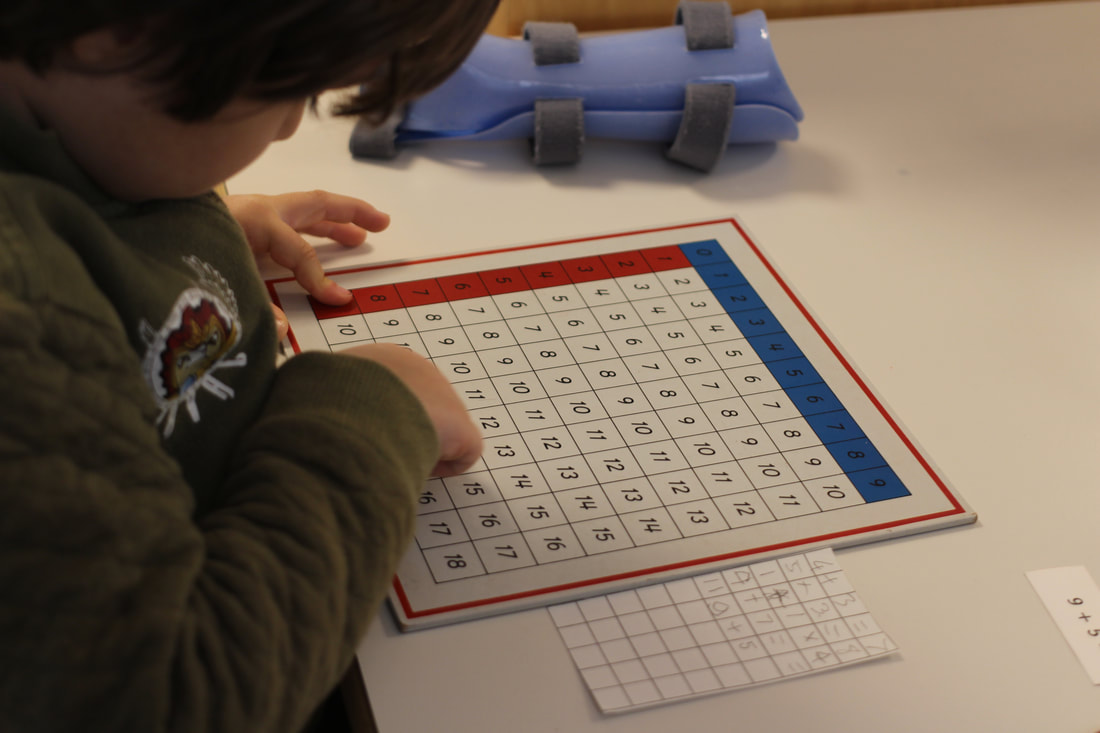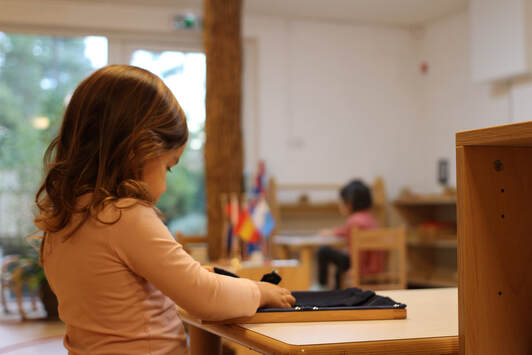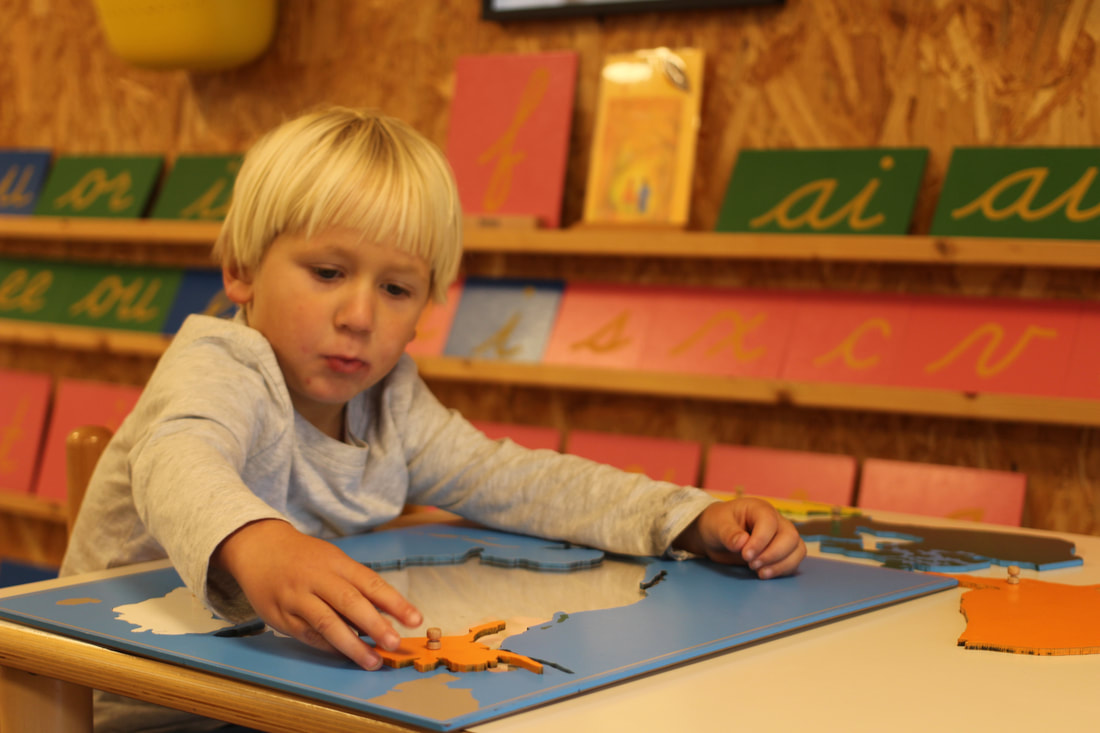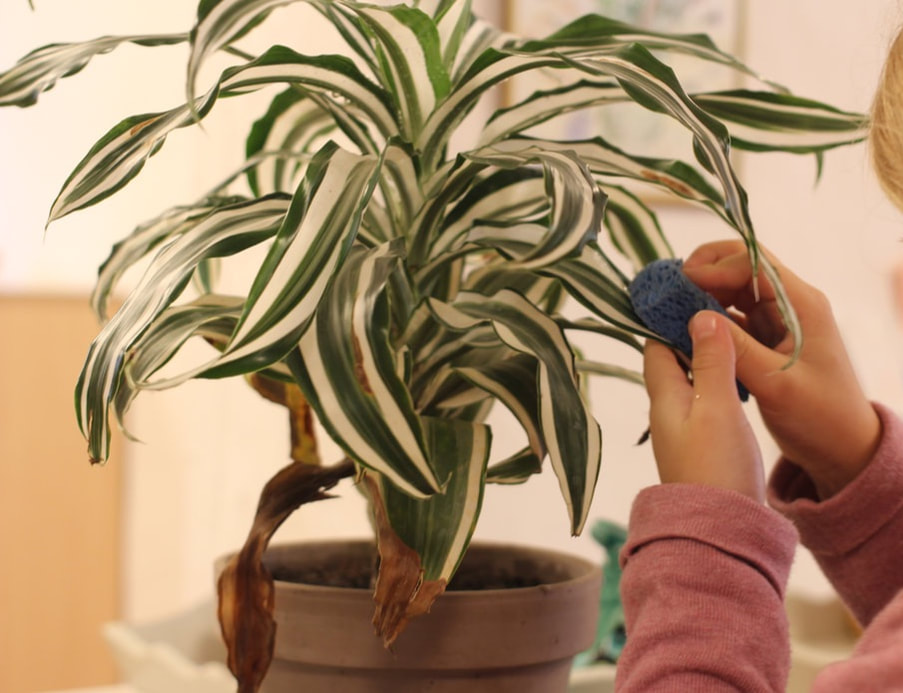The Children's House
2.8 to 6 Years of Age
|
Maria Montessori called her primary environment "Casa dei Bambini" which is Italian for the "Children's House." Much like the home, the primary environment is designed to meet the developmental needs of the child between three and six years of age. The child receives an individualized education in the presence of a larger group dynamic. As the child works to become an individual he learns his role and place in the larger society. There is no set curriculum; using the scientifically designed materials the child works at his own pace exploring language, sensorial activities, mathematics, geography, art, music, biology, and practical life. Working in a carefully prepared environment the child freely chooses activities that develop concentration, coordination of movements, and independence. Ultimately, the child's strengthened judgment and will builds a solid foundation for the betterment of his character and personality, becoming part of him for the rest of his life.
|
|
The Absorbent Mind and Sensorial Explorer
The primary aged child does not learn in the same way as an adult, he has an Absorbent Mind. The Absorbent Mind lasts within the child from the ages of birth to six. The child seeks knowledge, taking in indiscriminately, whatever will build his intelligence. This seeking of knowledge has no limitations. The Absorbent Mind allows the child to orient, explore, order the world and to adapt to the life the child lives in. The primary child's intellect is tied to his muscular and nervous systems and he is often referred to as the Sensorial Explorer. The scientifically designed Montessori Materials foster intellectual development by stimulating the muscular and nervous systems. Using his senses he explores the areas of language, mathematics, geography, art, music, biology, and practical life.
|
English Language Immersion Program
Many school systems worldwide do not begin the study of a second language until the age of seven. However, Montessori Hossegor recognizes the impact that language has on the mind of the small child before the age of seven. Therefore we begin the development of languages beyond the mother tongue the moment they arrive at our school. MH is an all English Language Immersion program affording French speaking children the opportunity to adopt English as naturally as they acquire their maternal language. We follow the natural rhythm of language development of the human being giving the child time for listening followed by the stages of speaking, writing, and finally reading.
|
The Montessori Materials
The primary environment is based on the needs and characteristics of the three to six year old child. The primary aged child has a need for order, language, movement, and an exploration of his environment through his senses. Using the materials, the child is lead towards concentration and coordination of his movements. These materials isolate concepts. When the child works with the sound boxes his sensitivity to a specific sound is isolated. By focusing the child's attention on one aspect or quality we grant him the opportunity to absorb an impression through his senses essentially building up his intellect. By following his own rhythm of natural development the child's hands-on work builds self-esteem, interest, and independence.
|
Disciplines
LangageThe language that we use as adults is the creation of the child. Language is the ability to think and is used in a myriad of ways. In the Montessori Primary Environment we firstly aid the development of language through oral. Examples of this spoken work include the reading of stories, songs or conversation. The children must first explore the world of oral language before they explore the written one. Once the child is ready to move on to written language she is shown how to put down her own thoughts into writing. Each child is unique and creates their own specific approach to writing therefore the Montessori Environment reflects this aspect. This is illustrated in the fact that some children might find a whole sheet of paper overwhelming while another finds a small piece of paper to limiting. What is essential however is that the child writes before the reading of another’s thoughts, as this is a difficult task. Again Dr. Montessori devised extraordinary materials that are an aid to the young child. For instance, the Movable Alphabet material is a way in which the children can write before they have acquired the ability to form written letters with the hand.
The sequential keys to Montessori Language are:
|
MathematicsMathematics is first introduced indirectly through the language, practical life and sensorial materials. Human beings are unified through mathematics, as it is a universal language. Montessori believed in Blaise Pascal’s notion that ‘man’s mind is mathematical by nature.’ It is the mathematical mind that enables us to calculate, to judge, to reason, to see relationships, and to abstract. It is generally during the second year of the Primary program when the mind is ready to assimilate the complexity of numerical operations that the mathematical area is introduced. The program introduces the scientifically designed materials to the child allowing an embarkation on a long but joyful journey to the discovery of his mathematical mind. The materials and activities embody the natural process of learning developing a strong foundation in order to approach higher-level mathematics with ease. Some topics of mathematics include quantity and its symbolization and the four main operations of addition, multiplication, subtraction and division.
Montessori Mathematics materials:
|
